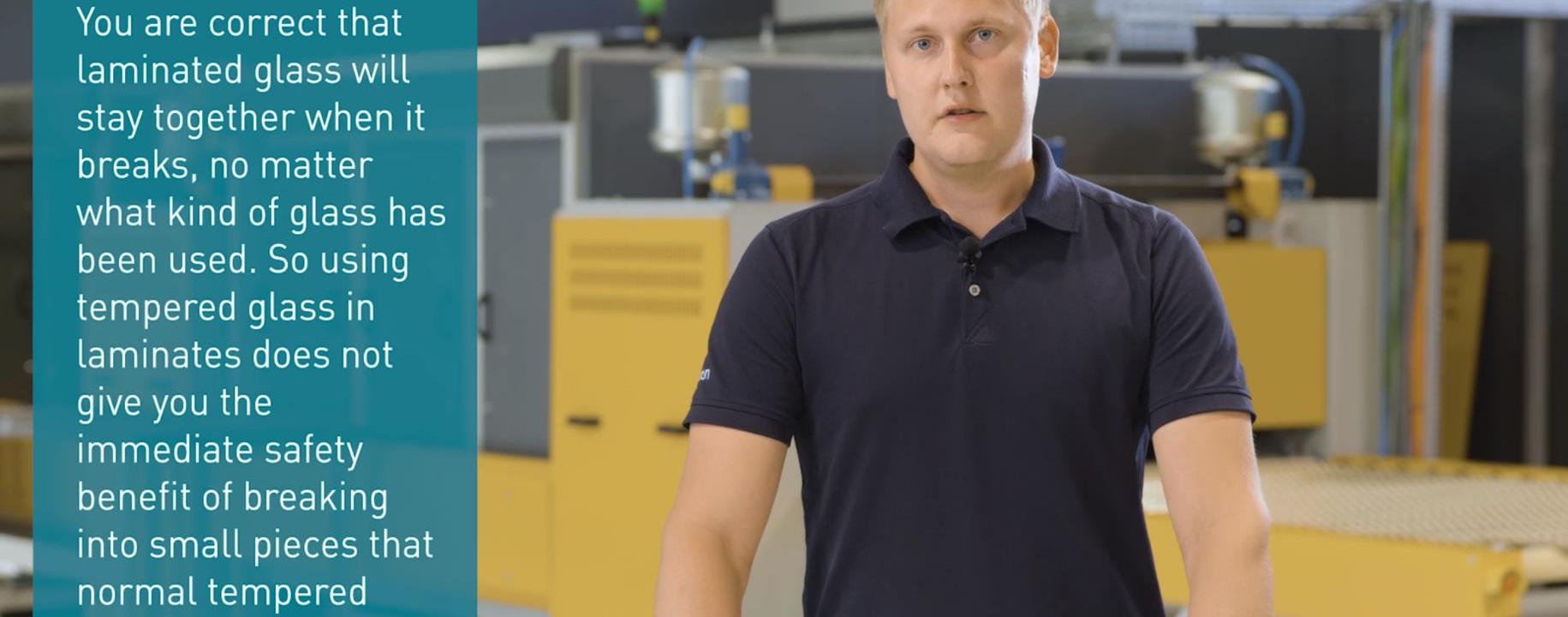
This week, we’re dealing with the following questions:
You are completely right that using laminated glass as safety glass doesn’t depend on what kind of glass you have in the laminate. Whether it is annealed glass, tempered glass or heat-strengthened glass, it will still stick to the interlayer when the glass breaks. A good point is that when you are using tempered glass to produce laminated glass, you don’t get the immediate safety effect that you can get with single tempered units that break into smaller pieces, which is less harmful to people.
Still, the advantages of tempered laminated glass are directly related to other benefits that tempered glass brings to the table when compared to the annealed glass. And the main advantage is that it is much stronger than annealed glass. Normally, about four to five times stronger. This enables you to bring a huge amount of strength into the laminate itself.
There are many applications, where you can take advantage of this. One of the most typical applications is hurricane-resistant glazing, where it is more common to utilize tempered glass combined with multiple layers of some kind of structural interlayer. This way, you can create a very strong laminate that can withstand the forces that you see in this kind of extreme conditions. More standard use cases include, for example, balustrade glazing and applications where it is useful to have either the added strength or the benefit of being able to use thinner glass instead of a thick annealed glass. With thinner glass, you are able to reduce the weight of the laminate, which brings multiple other benefits, such as reduced transportation costs, easier installation and more.
These were the main benefits that you get from using tempered glass to produce laminated glass. Additionally, tempered glass has better scratch resistance. This allows it to be a very valid solution in many other applications, even if it is used in laminated glass.
Yes, it is possible to anneal tempered glass. The main thing is to heat the glass to such a high temperature where stresses in the tempered glass relax. Practically, you have to heat the glass up to 500–600 degrees and then cool it down slowly so that the glass doesn’t break during cooling.
The process depends on what kind of stress level you want to achieve from the annealed glass. If you want to decrease the stress level from 80 MPa to some 30 MPa, then heating the glass up to 500 degrees for 10–30 minutes might be enough to anneal glass to that stress level. But if you want to achieve the same stress level as that of float glass, you need to heat the glass up to the highest temperature levels, such as 600–700 degrees and then cool it down very slowly – reducing just a couple of degrees per second.
The equipment that you can use depends on the process. If you just want to reduce the stress level to 30 MPa, then heat soak furnace might be of help. But in case you want to get to even lower stress levels, a different kind of equipment is needed.
Sign up for Glastory newsletter
We answer your questions about glass processing. Let us know your challenges and we promise to do our best to help you.
Comments are closed.